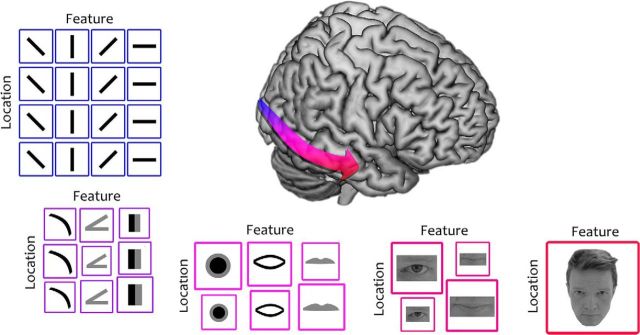Figure 1.
Location priors for face parts and their associated features can comprise neural processing channels that facilitate the processing of face parts in their typical locations. When moving along the ventral visual stream, receptive fields get bigger and preferred features get more complex. Because of their increasing complexity, features are increasingly likely to be linked to specific face parts (e.g., a dark disc surrounded by a lighter circle covaries with the presence of an eye). Information about such diagnostic visual features is fed into representations for specific face parts (e.g., an eye or a mouth), which in turn are fed into representations of whole faces later in the hierarchy. Because of repeated exposure, face-part-associated features could be preferentially processed when appearing in specific locations, where the associated part typically appears (exemplified by larger tiles). Further studies using time-resolved neural recordings are needed to investigate at which levels of the hierarchy location priors impact neural processing. Here, the location dimension reflects the vertical visual axis.

